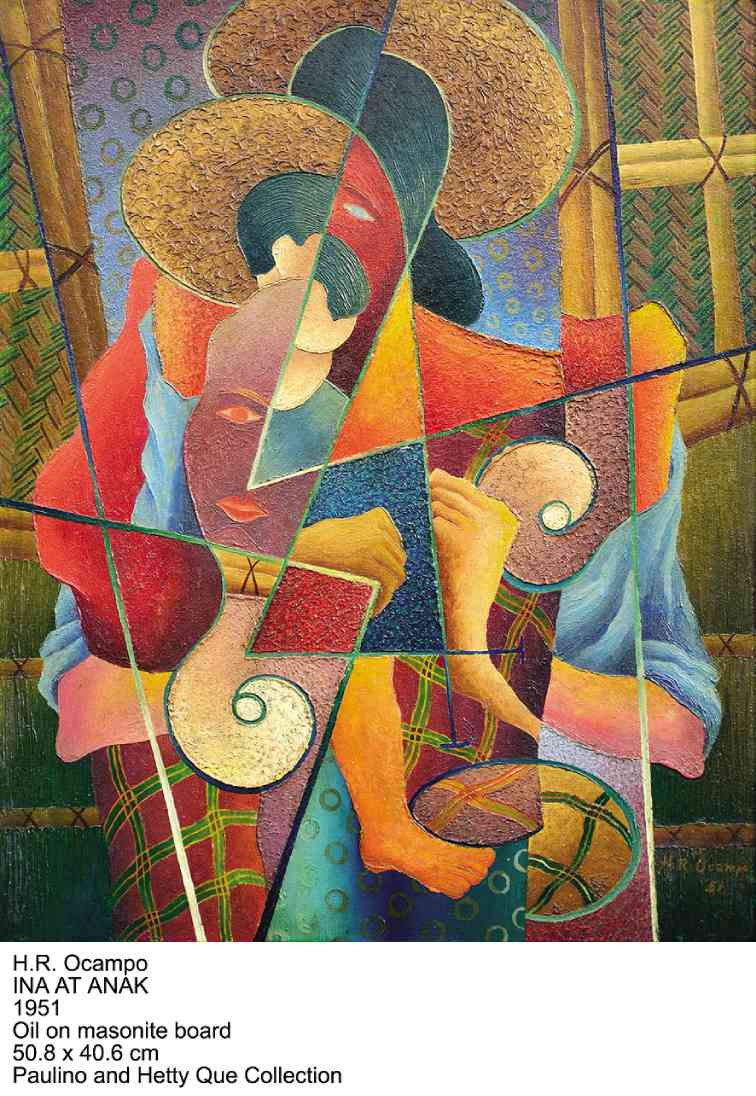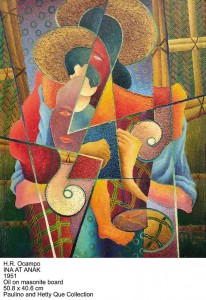
“It started as a joke,” said Ramon Villegas in his opening remarks, referring to the title of the show, now on view at Ayala Museum.
The show is actually billed as “The Real H.R. Ocampo: From the Paulino Que Collection.” It is the latest of the series “Images of Nation” that has previously featured the works of National Artists Victorio Edades, Carlos “Botong” Francisco, Vicente Manansala, Jose Joya, and now Hernando R. Ocampo.
Ken Esguerra of Ayala Museum, clarified to this writer: “The title is a double-edged blade, but it really means revealing the essential art of H.R. Ocampo.”
The show is, quite simply, crammed with masterpieces. The works are exhilaratingly revelatory of the depth and richness of possibilities in direction of this Filipino master which his early works in the 1950s very tantalizingly suggested.
Illustrious provenance
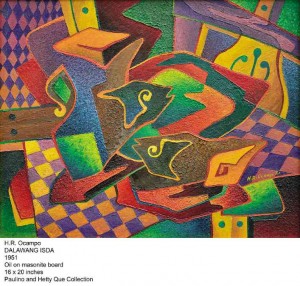
Moreover, the transparency as regard the provenance of each work is admirable. Each acquisition from the previous owners is a story unto itself: how Paulino Que assembled over a period of 30 years these 51 paintings and various drawings, from the disparate private collections of such illustrious individuals as varied as the family of Aurelio Alvero (a poet and critic who wrote as “Magtanggul Asa”), Lyd Arguilla, Roberto Villanueva, Lita Umali-Berthelsen, I.P. Soliongco, Eugenio Lopez Sr., Virginia Ty-Navarro, Don Luis Araneta, Teodoro Valencia, Alice M.L. Coseteng, Boysie Villavicencio, Salvador Bernal, Wili and Doreen Fernandez, Milagros Palanca-Furer, Emilio Aguilar Cruz, Arturo Puyat, Josie Joya Baldovino, Michelle Calica, Ricardo Scarella, Horacio Borromeo, Marino Corpuz.
More intriguing is the “repatriation” of some works that have found their way abroad. As with the works of Amorsolo, who knows what other Ocampo paintings still lie hidden in some attic or basement in the US?
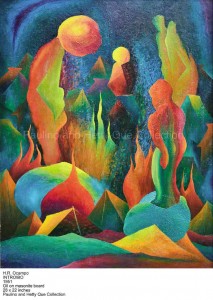
The earliest work in the show is the 1939 “Madonna of the Well,” which, as Villegas notes in the commemorative book, is “an attempt at Filipinizing the iconography of Madonna or Virgin Mother with the Child Jesus.” Galo Ocampo has his version, the “Brown Madonna,” as does Vicente Manansala, who did “Madonna of the Slums.”
Enriched by influence
Three significant art movements absorbed the interest of Ocampo, at least as evidenced by the Surrealist underpinning of “Blooming,” with its disembodied arm and clenched fist rising from the ground. “Flora” depicts a couple of stylized flowers insidiously opening up like sinister cavernous mouths.
Cubism, which strongly influenced his contemporary Manansala, enriched Ocampo’s spatial dimensions, with the planar and volumetric correlatives of the idiom lending a multidimensionality to such native still lifes of fish and fruits and the Mother and Child theme.
“Dalawang Isda” can be credited to the compositional rigor of Juan Gris, with its tightly interlocked planes replete with diamond and chequerboard designs. With these 1951 works, Ocampo also demonstrated his predilection for texture, his palette knife goading each daub of pigment into a buttery richness.
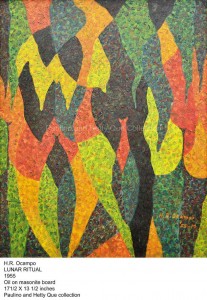
Divisionism, initiated by George Seurat, which engaged the retina to optically mix the colors, yielded a more intense and brilliant radiance of light. Ocampo proved to be a master of this technique, which reached its apex with “Backdrop,” possibly the largest work of the artist.
The fastidious and relentless application of oil pigments transformed the pictorial surface into a seeming mortared arena, festooned with shreds of ripped canvas or cloth alluding to its title. Villegas regards it as “one of the most abstract images in Philippines art.”
But for sheer exuberance of Ocampo’s classic cellular forms, verging on the operatic, “Decorative Motif” is unmatched. The work is a winding trail of duodenal membrane encasing a womb-like cavity where an ambiguously formed organism, half-embryo and half human, is nestled in its amniotic sac.
Debt of gratitude
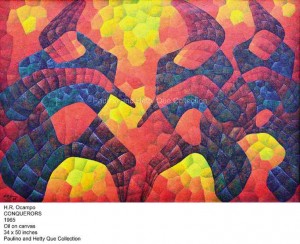
By virtue of its being the dramatic tapestry at the Cultural Center of the Philippines, “Genesis” may be the most instantly recognizable of Ocampo’s works, but one work in Paulino Que’s collection can easily better it. The painting is titled “Conquerors,” dominated by three suggestively human figures with their sinister pointed heads, disturbingly mutant as to refer to another well-known Ocampo series.
Indeed, the public owes a debt of gratitude to Paulino and Hetty Que for sharing their vast private collection of Filipino masterpieces in this and other past exhibitions. Incontestably, theirs is the finest, most comprehensive personal holdings in the country. As someone stated, not quite kiddingly: “It is the Real National Gallery of the Philippines.”
“Images of Nation: The Real H.R. Ocampo” will be on view at Ayala Museum’s Third Floor Galleries until Nov. 17.

